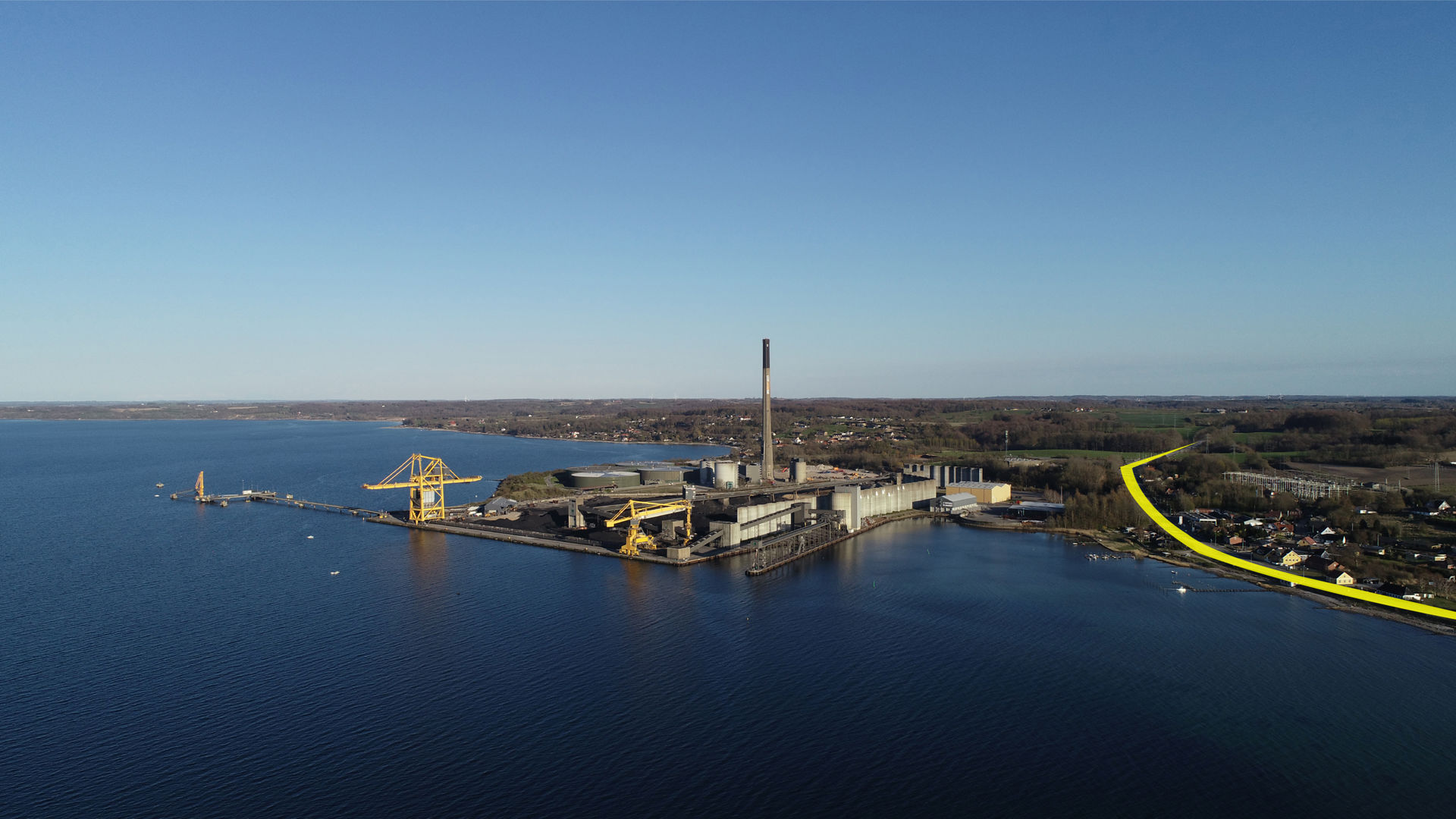Port of Ensted
Read more about Port of Ensted here.

In spring 2021, Aabenraa Municipality purchased the area “Nord for Kilen” from the Port of Aabenraa for urban development, whereas the Port acquired the former power station block 3 at the Port of Ensted, EV3, with a view to continuing its future-proofing of the Port. The area “Nord for Kilen” can house hundreds of homes as well as cafes, restaurants, specialty shops, open spaces, streams and storm water reservoirs – and not least a new museum for South Jutlandic art and seafaring history.
Up until today, the Port of Aabenraa has been characterised by traditional activities, focussing mainly on shipping and unshipping of goods.
Such activities are the lifeblood of much of Southern Jutland’s businesses and agricultural sector, both of whom receive and ship raw materials and products via the port. The Port of Aabenraa is the only remaining commercial port in Southern Jutland, and today traditional activities are being supplemented with new activities at the Port of Ensted, which in the future will house production activities. For example, the largest industrial gas company in Northern Europe, Linde Gas, plans to build a large power-to-X facility at the Port of Ensted capable of producing the climate friendly hydrogen which other companies in the area will need to produce green, hydrogen-based products.
With a water depth of 16-18 metres, Ensted is one of deepest ports in the Baltic Sea, and its infrastructure, location and great hinterland makes it ideal for sustainable production of green energy and similar activities. The area is 350,000 square metres large in total, including 65,000 square metres of quay and quay areas as well as 285,000 square metres of hinterland and 480 metres of quay.
The Port of Ensted used to house the power station Enstedværket owned by DONG Energy, which closed in 2012-13. The station was built in 1958 by the deep Aabenraa Fjord, and it was home to the largest coal and oil port for power stations in Northern Europe. Coal arrived in the port on large ships, and some of it continued on barges to other power stations in Jutland or on Funen.
The station’s 600-MW production unit, EV3, was inaugurated in 1979 and was the result of the first foreign co-investment in Danish electricity production, as it was constructed by the former Danish An/S Sønderjyllands Højspændingsværk and the German Nordwestdeutsche Kraftwerke (today E.ON). In addition to electricity production, Enstedværket had a district heating capacity of a maximum of 85 MW. The station’s flue gas cleaning system was expanded to also include a desulphurisation system and a system for removal of nitric oxide, just as a 40-MW biomass-fired unit was put into operation in 1998.
